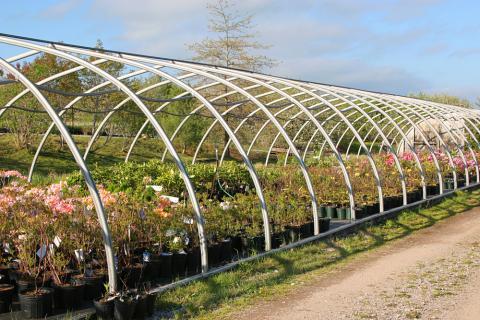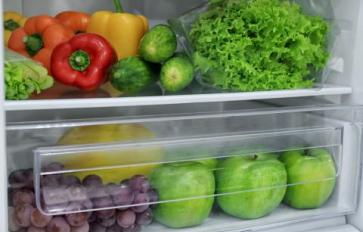
Thirty years ago and about eighteen miles from Aspen, Colorado, Jerome Osentowski built a “hoop house,” a tunnel made of polyethylene that heats up due to solar radiation. He had in mind a greenhouse and kept adding to it with recycled steel and other materials. Over the years, his original hoop house design expanded into five greenhouses that now produce food via climates ranging from Zones 6 through 12.
Director and founder of the Central Rocky Mountain Permaculture Institute (CRMPI), Osentowski grows on a rocky terrain and in a cool climate with near-net-zero technology. Today he is one of the country’s leading permaculture designers.
His five forest garden greenhouses produce more than two hundred varieties of stone fruits, medicinal herbs, vegetables, flowers, and tropical fruit, including many varieties of bananas.
How is a permaculture greenhouse or hoop house designed?
At the center of the greenhouse is a “climate battery”—not a new concept, but one that CRMPI has put to use as a subterranean air-circulation system. The climate battery takes in moist air from the greenhouse during the day, stores it in the soil, and discharges it at night—a heat exchange system.
The battery is buried beneath the greenhouse and consists of four-inch drainpipes with intake and outtake structures. Low wattage fans are installed in each of these structures and operate constantly. As air cools beneath the ground, it releases moisture and heat. At night, when the air becomes cooler than soil, the blown air delivers heat stored in the soil by day.
On top of the climate battery is layered three feet of soil and sheet mulching with additions such as horse manure, straw, hay, comfrey trimmings, coffee grounds, stable cleanings, sawdust, and weeds.
There’s also a water gravity-feed collection system that captures water from greenhouse roofs; snowmelt is used for watering during the spring. Insects do biological control of the aphid population with an ample supply of lacewings, dragonflies, and tiny wasps. Nothing is thrown away. Everything is used. Wood pallets are used to retain beds.
Want to know more?
In his new book, The Forest Garden Greenhouse, Osentowski explains “how to design and manage an indoor permaculture oasis.” You may also visit www.crmpi.org for more information.
“We bring nature into our awareness and it accepts us,” he said at a recent talk at Ecology Center in Berkeley, California, en route to Cuba where he is developing a number of permaculture demonstration sailboats.








